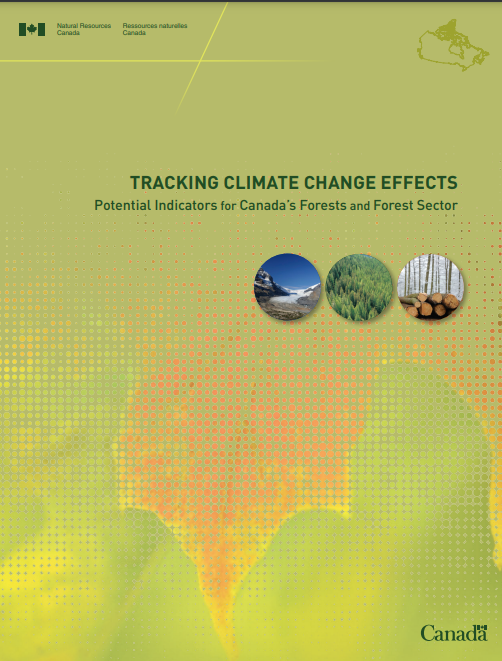Article /
Tracking Climate Change Effects: Potential Indicators for Canada’s Forests and Forest Sector

Introduction
This resource was submitted by the Climate Risk Institute for use by the CanAdapt Climate Change Adaptation Community of Practice.
This article is an abridged version of the original text, which can be downloaded from the right-hand column. Please access the original text for more detail, research purposes, full references, or to quote text.
Climate change effects are already being observed in Canada’s forests, influencing the provision of goods and services on which the Canadian forest sector relies. Given the magnitude of projected climate change, it is becoming increasingly imperative to explore and implement adaptation measures in addition to mitigation strategies. Proactive adaptation is based on three fundamental pillars: knowledge of potential changes, the will to intervene, and the development and implementation of adaptation actions (Figure 1). In the context of climate change, proactive adaptation of the forest and the forest sector necessitates that each of these three pillars rely on an adaptive management cycle of monitoring, assessing, and adjusting. The development of a tracking system that reports on relevant indicators of climate change is an integral part of such a cycle.
The overarching goal of this report is to provide potential indicators and selection criteria to develop a tracking system for Canada’s forests and forest sector. The specific objectives are (1) to present a suite of potential indicators of climate change effects on Canada’s forests and forest sector and (2) to provide criteria to select and prioritize indicators to track climate change effects. Indicators of the effectiveness of adaptation actions are not covered in the report as it is a nascent field of investigation. The report is elaborated with a forest sector audience in mind including decision makers in forest industries; federal, provincial, and territorial departments and agencies; conservation agencies; nongovernmental organizations; research scientists; and the public.
Citation: Gauthier, S.; Lorente, M.; Kremsater, L.; De Grandpré, L.; Burton, P.J.; Aubin, I.; Hogg, E.H.; Nadeau, S.; Nelson, E.A.; Taylor A.R.; Ste-Marie, C. 2014. Tracking climate change effects: potential indicators for Canada’s forests and forest sector. Natural Resources Canada, Canadian Forest Service, Ottawa, ON. 86 p.
Citation: Gauthier, S.; Lorente, M.; Kremsater, L.; De Grandpré, L.; Burton, P.J.; Aubin, I.; Hogg, E.H.; Nadeau, S.; Nelson, E.A.; Taylor A.R.; Ste-Marie, C. 2014. Tracking climate change effects: potential indicators for Canada’s forests and forest sector. Natural Resources Canada, Canadian Forest Service, Ottawa, ON. 86 p.
